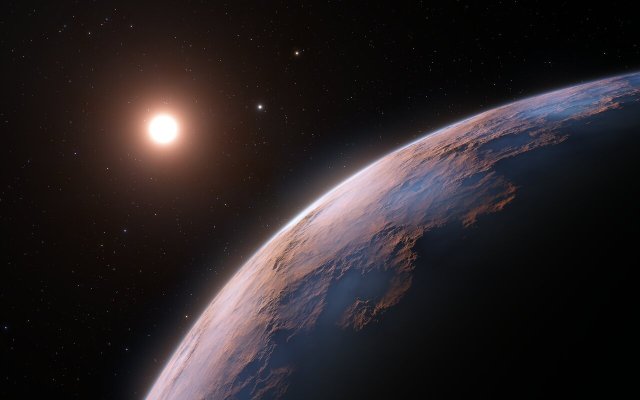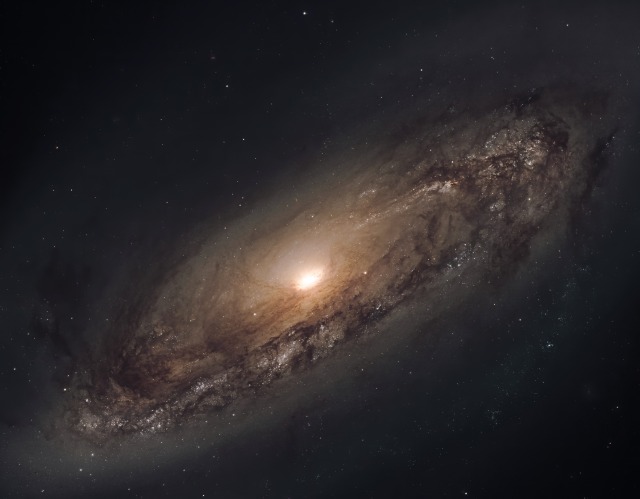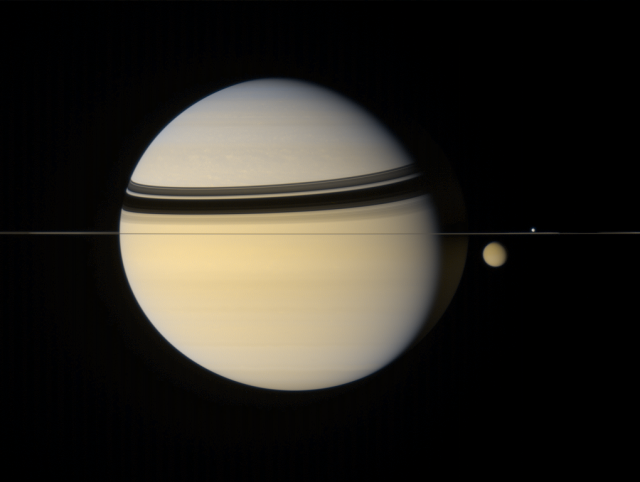#astronomia

A giant cosmic necklace glows brightly in this Hubble Space Telescope image. The object, aptly named the Necklace Nebula, is a recently discovered planetary nebula, the glowing remains of an ordinary, Sun-like star.
Credit: NASA, ESA and the Hubble Heritage Team (STScI/AURA)


Mounded, luminous clouds of gas and dust glow in this Hubble image of a Herbig-Haro object known as HH 45. Herbig-Haro objects are a rarely seen type of nebula that occurs when hot gas ejected by a newborn star collides with the gas and dust around it at hundreds of miles per second, creating bright shock waves.
Credit: NASA, ESA, and J. Bally (University of Colorado at Boulder); Processing: Gladys Kober (NASA/Catholic University of America)

This Hubble image captures a portion of a dark nebula in the constellation Cepheus. Dark nebulae ― also called absorption nebulae ― are clouds of gas and dust that neither emit nor reflect light, instead blocking light coming from behind them. These nebulae tend to contain large amounts of dust, which allows them to absorb visible light from stars or nebulae beyond them.
Credit: NASA, ESA, T. Megeath (University of Toledo), and K. Stapelfeldt (Jet Propulsion Laboratory); Processing: Gladys Kober (NASA/Catholic University of America)

This comparison view shows puffing dust bubbles and an erupting gas shell — the final acts of a monster star.
AG Carinae is formally classified as a Luminous Blue Variable because it is hot (blue), very luminous, and variable. Such stars are quite rare because there are not many stars that are so massive. Luminous Blue Variable stars continuously lose mass in the final stages of their life, during which a significant amount of stellar material is ejected into the surrounding interstellar space, until enough mass has been lost that the star has reached a stable state.
AG Carinae is surrounded by a spectacular nebula, formed by material ejected by the star during several of its past outbursts. The nebula is approximately 10 000 years old, and the observed velocity of the gas is approximately 70 kilometres per second. While this nebula looks like a ring, it is in fact a hollow shell rich in gas and dust, the centre of which has been cleared by the powerful stellar wind travelling at roughly 200 kilometres per second.
Credits: ESA/Hubble and NASA, A. Nota, C. Britt

Messier 89 galaxy by Hubble space telescope
Credit: NASA/ESA, Hubble

This image shows knots of cold, dense interstellar gas where new stars are forming. These Free-floating Evaporating Gaseous Globules (frEGGs) were first seen in Hubble’s famous 1995 image of the Eagle Nebula. Because these lumps of gas are dark, they are rarely seen by telescopes. They can be observed when the newly forming stars ignite, their intense ultraviolet radiation eroding the surrounding gas away and letting the denser, more resistant frEGGs remain. These frEGGs are located in the Northern Coalsack Nebula in the direction of Cygnus.
Credit: NASA, ESA, and R. Sahai (Jet Propulsion Laboratory); Processing: Gladys Kober (NASA/Catholic University of America)

This star-studded image from the NASA/ESA Hubble Space Telescope depicts NGC 6717, which lies more than 20 000 light-years from Earth in the constellation Sagittarius.
Credits: ESA/Hubble and NASA, A. Sarajedin

M97: The Owl Nebula
The Owl Nebula is perched in the sky about 2,600 light-years away toward the bottom of the Big Dipper’s bowl. Also cataloged as M97, the 97th object in Messier’s well-known list, its round shape along with the placement of two large, dark “eyes” do suggest the face of a staring owl. One of the fainter objects in Messier’s catalog, the Owl Nebula is a planetary nebula, the glowing gaseous envelope shed by a dying sun-like star as it runs out of nuclear fuel.
Credit:Keith Quattrocchi

New planet detected around star closest to the Sun
A team of astronomers using the European Southern Observatory’s Very Large Telescope (ESO’s VLT) in Chile have found evidence of another planet orbiting Proxima Centauri, the closest star to our Solar System. This candidate planet is the third detected in the system and the lightest yet discovered orbiting this star. At just a quarter of Earth’s mass, the planet is also one of the lightest exoplanets ever found. (source)

Titan and Janus March 21, 2006
Credit: NASA/JPL-Caltech - Processing: Elisabetta Bonora & Marco Faccin / aliveuniverse.today

These are galaxies of the Hercules Cluster, an archipelago of island universes a mere 500 million light-years away. Also known as Abell 2151, this cluster is loaded with gas and dust rich, star-forming spiral galaxies but has relatively few elliptical galaxies, which lack gas and dust and the associated newborn stars.
Image Credit: Ken Crawford

A view of NGC 4569, aka Messier 90, an intermediate spiral galaxy located 60 million light-years away in the constellation Virgo.
Credit: NASA/ESA, STScI, Janice Lee, Jason Major

The moments after totality during the August 21, 2017 solar eclipse. From Charleston, SC.
Credit: Jason Major

Very faint but also very large on planet Earth’s sky, a giant Squid Nebula cataloged as Ou4, and Sh2-129 also known as the Flying Bat Nebula, are both caught in this cosmic scene toward the royal constellation Cepheus.
Image Credit: Rolf Geissinger

A gorgeous spiral galaxy, Messier 104 is famous for its nearly edge-on profile featuring a broad ring of obscuring dust lanes. Seen in silhouette against an extensive central bulge of stars, the swath of cosmic dust lends a broad brimmed hat-like appearance to the galaxy suggesting a more popular moniker, the Sombrero Galaxy.
Image Credit: NASA, ESA. Processing: Ignacio Diaz Bobillo

https://www.link4universe.tumblr.com
@link4universe
You can follow me on my new channel, Safe for Work, were i talk about astronomy and wonder and science and my self with photos of me etc.
Potete seguirmi sul mio nuovo canale, ora anche senza contenuti erotici (almeno per ora XD mo’ vediamo quanto resisto ahah.. no dai scherzo, faccio il bravo..) dove parlo di scienza, astronomia, storia, e vlog generali delle mie giornate, di me, i gatti ed il canale youtube e spettacoli.
il link invece per instagram è
https://www.instagram.com/adrianfartade




